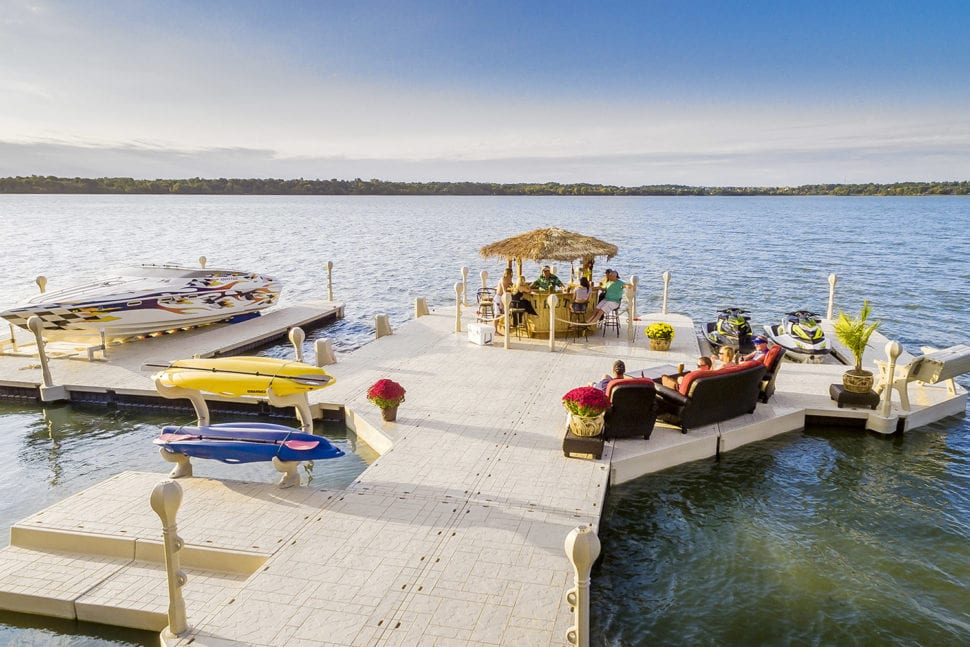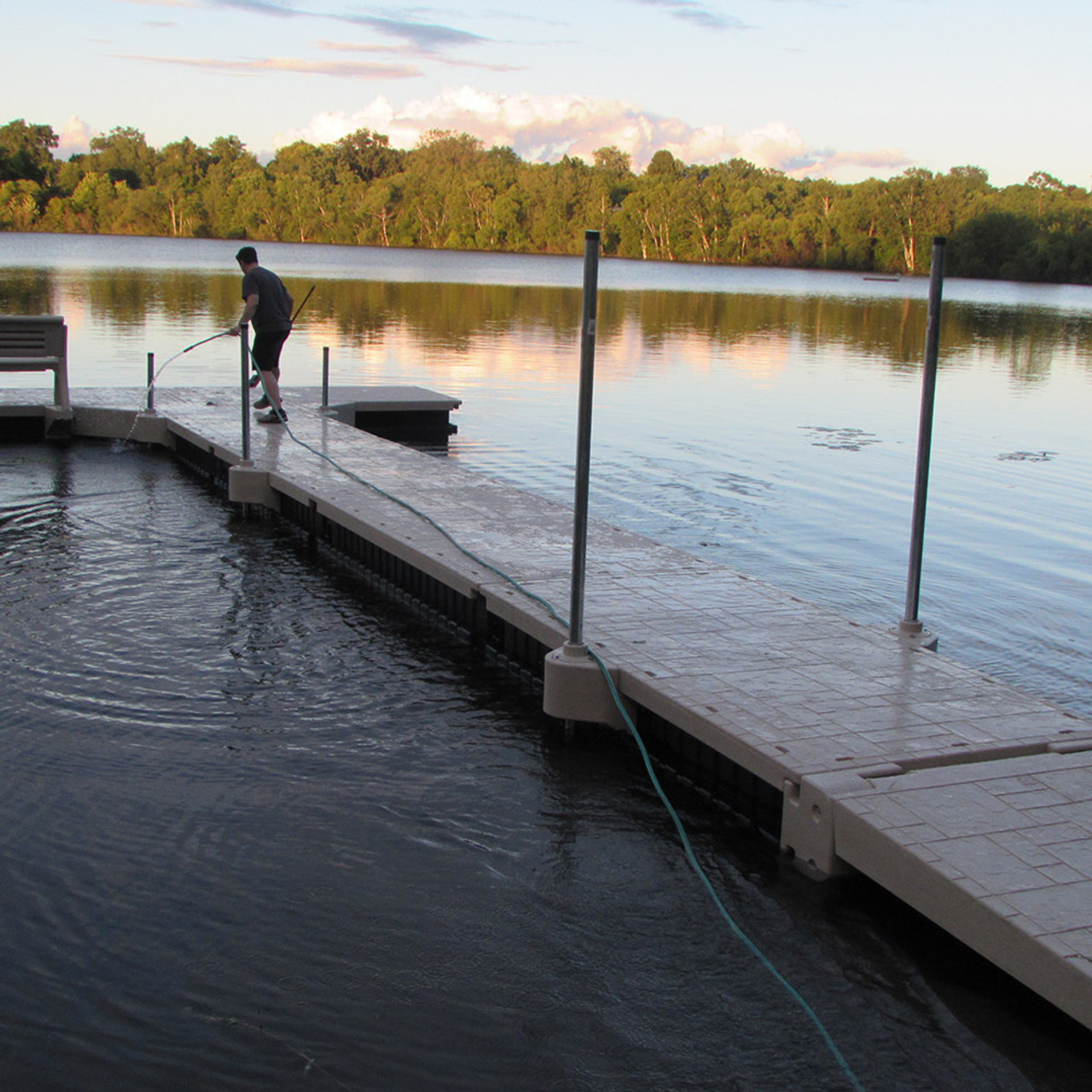Explore the Series Of Floating Dock Solutions Designed to Suit Every Boater's Requirements
Explore the Series Of Floating Dock Solutions Designed to Suit Every Boater's Requirements
Blog Article
Create the Perfect Docking Option With Floating Docks
Floating docks existing a functional service for a variety of maritime needs, adapting perfectly to varying water degrees and varied vessel types. As we check out the important aspects that contribute to the effectiveness of floating docks, several crucial elements concerning stability and upkeep will certainly emerge, elevating concerns regarding exactly how to maximize your docking experience.

Advantages of Floating Docks
Floating docks deal countless advantages that make them an ideal option for numerous maritime applications. Among the main benefits is their flexibility to transforming water levels. Unlike fixed docks, floating docks increase and loss with the tide, making certain regular accessibility for vessels. This function is particularly crucial in areas vulnerable to considerable tidal variations or seasonal water level changes.
In addition, floating docks are usually simpler and quicker to set up contrasted to traditional set structures. Their modular design permits uncomplicated setting up and disassembly, promoting maintenance and relocation when needed. This flexibility is particularly helpful for temporary applications or in settings where conditions may transform.
Floating docks likewise often tend to be more environmentally friendly, as they reduce interruption to the seabed and bordering aquatic communities. Their resilient nature decreases the danger of damages to marine life, advertising a much healthier atmosphere. These docks can be customized to accommodate various vessel dimensions, making certain that they satisfy particular operational requirements.
Inevitably, the combination of adaptability, ease of installation, and environmental considerations makes floating docks an extremely efficient solution for a variety of maritime requirements.
Selecting the Right Materials
Choosing the suitable materials for floating docks is critical to ensure durability, longevity, and security. The selection of products straight influences the dock's performance in various environmental conditions, including exposure to water, sunlight, and possible wear from marine traffic.
Common materials used for floating docks consist of aluminum, wood, and high-density polyethylene (HDPE) Light weight aluminum is lightweight, corrosion-resistant, and requires very little maintenance, making it an outstanding selection for long life. However, its first cost can be higher contrasted to other products.
Wood, while visually attractive and supplying a traditional appearance, can be at risk to rot and insect damage if not correctly treated. Utilizing pressure-treated timber or naturally sturdy types like cedar or redwood can minimize these problems.
HDPE is a preferred selection due to its resistance to UV rays and chemicals, along with being eco-friendly. floating dock company. It is readily available and light-weight in different shades, allowing for modification
Inevitably, the appropriate material selection will certainly depend upon details requirements, consisting of spending plan, desired aesthetic appeals, and ecological considerations. Careful analysis of these variables will lead to a successful and durable floating dock solution.
Design Considerations for Stability
When making floating docks, making sure stability is a fundamental aspect that can substantially influence their performance and safety. Security in floating dock style is affected by different factors, including buoyancy, weight circulation, and the arrangement of parts. An ideal buoyancy system need to utilize products that provide enough lift while minimizing weight. This balance makes certain that the dock stays above water, also under differing lots.
Weight circulation is important; equally dispersing loads throughout the dock prevents tilting and enhances stability. This can be attained through strategic positioning of docking equipment, such as cleats and fenders, along with correct spacing of drifts. Additionally, the measurements of the dock must be thoughtfully intended. Larger designs can provide raised security, particularly in harsh water problems, while look at more info longer docks may need added assistances to avoid sagging.
Another crucial factor to consider is the ecological impact, including wave action and wind. Incorporating attributes such as sidewalls or skirting can help mitigate the results of ecological forces, maintaining stability in negative conditions. Inevitably, a mix of thoughtful design, product selection, and understanding of environmental variables will certainly generate a floating dock that satisfies both security and safety and security requirements.
Setup Tips and Techniques

Following, safeguard the necessary authorizations and comply with local guidelines, which may determine installment methods and environmental considerations. If needed, involve a qualified professional experienced in floating dock setups. Use top quality materials created for aquatic environments to enhance longevity and long life.
When placing the dock, straighten it parallel to the coastline to assist in very easy access. Make certain that the anchoring system is robust, using concrete blocks or helical anchors to maintain the dock against wind and wave activity. It's important to account for seasonal water degree fluctuations, consisting of possible ice activity in cooler climates.
During the installment, confirm the dock's floatation and security prior to settling the anchoring. Regularly inspect the installation for any indications of wear or damages. By following these tips and strategies, you can accomplish a secure, functional, and cosmetically pleasing floating dock setup that fulfills your requirements.
Maintenance and Treatment Guidelines
Maintaining and caring for floating docks is important to prolonging their lifespan and making certain secure use. Routine examinations need to be conducted to determine any indicators of wear, damage, or aquatic development. Try to find fractures, loose fittings, or blemished locations on the dock's surface area, as these problems can endanger architectural integrity.
Cleansing is vital. Use a pressure washer to eliminate algae, barnacles, and particles, which can gather over time. For persistent growth, take into consideration eco pleasant cleansing representatives that won't damage water life.
In addition, inspect the mooring lines and supports often to guarantee they are secure and totally free from deterioration. Change any kind of frayed or harmed lines immediately to preserve stability.
During extreme climate, such as storms or freezing problems, take precautionary actions. Secure the dock with extra mooring lines and, Going Here if viable, eliminate any kind of removable parts to stop damage.
Conclusion
In conclusion, the application of floating docks offers a reliable and functional docking service suitable for various maritime applications. With proper setup and normal maintenance, floating docks can offer effective and trusted docking experiences for a vast array of vessels.
As we explore the crucial components that add to the efficiency of floating docks, several crucial variables regarding stability and maintenance will emerge, increasing concerns about just how to maximize your docking experience. Unlike repaired docks, floating docks rise and loss with the trend, making sure constant accessibility for vessels.When developing floating docks, making certain stability is a basic facet that can dramatically impact their performance and safety. Stability in floating dock design is influenced by various variables, consisting of buoyancy, weight distribution, and the arrangement of components. Ultimately, a combination of thoughtful layout, material choice, and understanding of ecological variables will produce a floating dock that fulfills both security and safety and blog security requirements.
Report this page